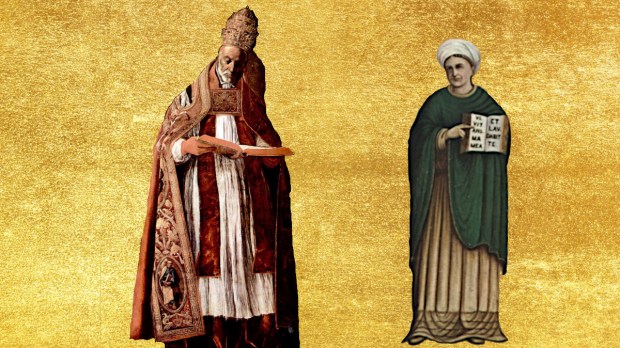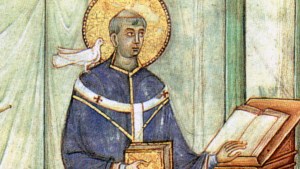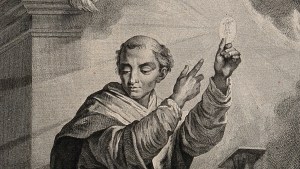St. Silvia, celebrated by the Church on November 3, was added to the calendar in the 17th century, almost 1,200 years after her death. We know very little about her, but the little we do know is enough to earn her the glory of the altar.
Descended from an ancient Christian family
When Silvia married her distant cousin, the senator Gordianus, in Rome around the year 538, she must have been 18 or 20 years old. Both spouses belonged to a very ancient patrician lineage, that of the Acilii Glabriones, the last descendants of the republican aristocracy.
Their grandfather, the consul Marcus Acilius Glabrio, had converted to Christianity as early as the year 70. He died for Christ in 83, accused of the “crime of atheism” — in other words, of denying the pagan gods.
The family remained staunch supporters of the Church. That’s why they didn’t emigrate to Constantinople, as almost all the patricians did in the 4th century. They preferred the humble service of God and the papacy under persecution to the great political and military careers of the imperial court, now that Rome no longer held the leading place on the world stage.
Serving her family and serving God
When she married Gordianus, Silvia knew that their marriage — as was the practice in very pious families — would only last a short time. Once she has secured the family’s future by giving her husband two sons, the couple would separate to “live in the holy purpose,” i.e., they would both enter the service of God.
This choice, which seems astonishing to us, was commonplace at the time. True priestly families existed, with married men with children separating from their wives and adopting celibacy and becoming priests, bishops, and even popes. Their sons often followed in their footsteps. In fact, Gordianus was the great-great-grandson of Felix III.
Silvia also knew that she was making a gamble on the future, for times were bad in the 6th century. It was so rough that some people, thinking the end of the world was imminent, refused to marry and have children. This was not the case for the young couple, who settled into their vast family home on Caelian Hill in Rome. They led the life of their milieu, between worldly obligations, prayer, and charity.
She gave birth to two sons: Gregory in 540, after a first whose name we do not know. After this, Gordianus and Silvia gave up married life, although they continued to live on the same property, large enough to avoid temptation. The young woman retired to what would become known as the “oratory of St. Silvia” and later the church of Santa Silvia al Celio.
Maternal love, mirror of divine love
As an example of maternal love, Gregory would one day recount this anecdote. As a little boy, while playing on the edge of a high-floor window, his mother caught him just as he was about to fall. First, she instinctively gave him a slap out of terror for how he had carelessly endangered his life, then, crying with relief, she desperately held him close to her and showered him with kisses. This memory served to illustrate the divine love that, like a mother’s, is not altered by necessary correction.
Silvia was very attached to their frail eldest son, who suffered serious stomach problems early on and eventually died. She watched over his diet, banishing manure-fertilized and potentially toxic fruits and vegetables bought at the market. Instead, she fed him only with produce from the family garden, which she lovingly tended.
Patroness of all priests’ mothers
A confidante of her surviving son Gregory, she knew that after a youthful heartbreak he didn’t want to marry and was considering the priesthood. His father, Gordianus, did not approve, and pushed Gregory towards a political career. He would distinguish himself in politics, becoming the last great prefect of the city and an outstanding administrator. This training would stand him in good stead when he became pope and faced the worst difficulties.
No doubt it was Silvia who pleaded with her husband to let their son follow his own path. It wasn’t until 575, following the death of his father, that Gregory was able to resign his office and found a monastery on the family estate. Silvia died there, perhaps in 592.
If that is the case, she may have had the joy of attending the pontifical coronation of her son, who became pope on September 3, 590. This is not known with certainty, however. What is certain is the filial love of the sovereign pontiff, who had the portraits of his parents painted in the church of his monastery Sant’Andrea al Celio.
Pope St. Gregory the Great thus bequeathed to us the image of his strong, pious, chaste mother, abandoned to Providence, who knew how to help him in his priestly vocation. As such, Saint Silvia is the patron saint of all the mothers of priests, as well as of those who devote themselves to helping priests and praying for vocations.




